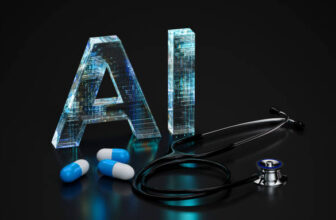Introduction
Facial laser treatment has revolutionized dermatology and aesthetic medicine, offering a non-invasive and highly effective solution for various skin concerns. Over the past few decades, advancements in laser technology have enabled medical professionals to treat conditions such as acne scars, wrinkles, hyperpigmentation, and vascular lesions with precision and minimal downtime. This article explores the latest advances, medical applications, and benefits of facial laser treatments.
Advances in Facial Laser Treatment
The field of laser treatment has seen significant innovations, particularly in the development of more targeted and safer laser systems. Some of the most notable advancements include:
Fractional Laser Technology
Traditional laser treatments often affected large areas of the skin, causing prolonged recovery periods. Fractional lasers, such as Fraxel, create micro-injuries in the skin, promoting collagen production while leaving surrounding tissue intact. This results in faster healing and reduced side effects.
Picosecond Lasers
These advanced lasers, such as PicoSure, use ultra-short pulses to break down pigmentation and stimulate skin rejuvenation with minimal heat damage. They are particularly effective for treating melasma, tattoos, and fine lines.
Combination Treatments
Modern laser treatments often incorporate multiple wavelengths and energy sources to target different layers of the skin. For instance, combining ablative and non-ablative lasers can enhance results for scar revision and anti-aging treatments.
Cooling and Safety Enhancements
To minimize discomfort and the risk of burns, modern laser systems integrate cooling mechanisms such as cryogen sprays and contact cooling. This feature allows higher energy levels to be used safely.
AI and Smart Laser Systems
Artificial intelligence is being integrated into laser devices to optimize settings based on skin type and condition, ensuring personalized and precise treatment.
Medical Applications of Facial Laser Treatment
Facial laser treatment is used for both cosmetic and therapeutic purposes in dermatology. Some of the most common medical applications include:
Skin Rejuvenation and Anti-Aging
Lasers help reduce fine lines, wrinkles, and sagging by stimulating collagen production. CO2 and Erbium lasers are commonly used for resurfacing, tightening the skin, and improving overall texture.
Acne and Acne Scars
Laser treatments, such as blue light therapy and fractional lasers, help eliminate acne-causing bacteria, reduce inflammation, and promote skin healing. For acne scars, fractional CO₂ lasers can effectively smooth out deep scars.
Hyperpigmentation and Melasma
Conditions like melasma and sun spots are treated using Q-switched and picosecond lasers, which break down excess melanin without damaging the surrounding skin.
Rosacea and Vascular Lesions
Lasers such as pulsed dye lasers (PDL) and intense pulsed light (IPL) therapy are used to target and shrink blood vessels responsible for redness and visible capillaries in conditions like rosacea and spider veins.
Tattoo Removal
High-energy lasers, such as Q-switched and picosecond lasers, break down tattoo pigments, allowing the body to clear them naturally over multiple sessions.
Scar and Stretch Mark Reduction
Fractional lasers improve the appearance of surgical scars, burn scars, and stretch marks by stimulating new collagen and elastin production.
Benefits of Facial Laser Treatments
Facial laser treatments offer several advantages over traditional skin treatments and surgical procedures. Some of the key benefits include:
- Minimally Invasive—Unlike surgical procedures such as facelifts, laser treatments do not require incisions, reducing the risk of infections and complications.
- Precision and Customization—Advanced laser technology allows precise targeting of skin concerns without affecting surrounding tissues, making treatments safer and more effective.
- Reduced Downtime—Non-ablative and fractional laser treatments allow patients to resume their daily activities with minimal recovery time compared to traditional resurfacing methods.
- Long-Lasting Results—With proper skincare and follow-up treatments, the benefits of laser therapy can last for months or even years, depending on the condition treated.
- Versatility—Laser treatments can address multiple skin concerns in a single session, making them a cost-effective and time-efficient solution for patients.
- Safe for Various Skin Types— Newer laser technologies have been developed to cater to different skin tones, reducing the risk of pigmentation issues in individuals with darker skin.
Potential Risks and Considerations
While facial laser treatments offer numerous benefits, it is essential to consider potential risks and side effects, which include:
- Temporary Redness and Swelling—Some patients may experience mild redness and swelling after treatment, which typically subsides within a few hours to days.
- Hyperpigmentation or Hypopigmentation—In some cases, especially for darker skin tones, improper laser settings can lead to changes in skin pigmentation.
- Sensitivity and Irritation—Treated areas may become temporarily sensitive to sunlight and skincare products.
- Multiple Sessions Required— Some conditions, such as deep scars or pigmentation, may require several sessions for optimal results.
Conclusion
Facial laser treatment has emerged as a groundbreaking solution for various skin conditions, from aging concerns to pigmentation disorders. With continuous advancements in technology, laser therapy is becoming safer, more effective, and accessible to a broader range of patients. However, it is crucial to consult a qualified dermatologist or medical professional to ensure the most suitable treatment plan based on individual skin type and concerns. With proper care and expert guidance, facial laser treatments can help achieve healthier, youthful, and rejuvenated skin.




